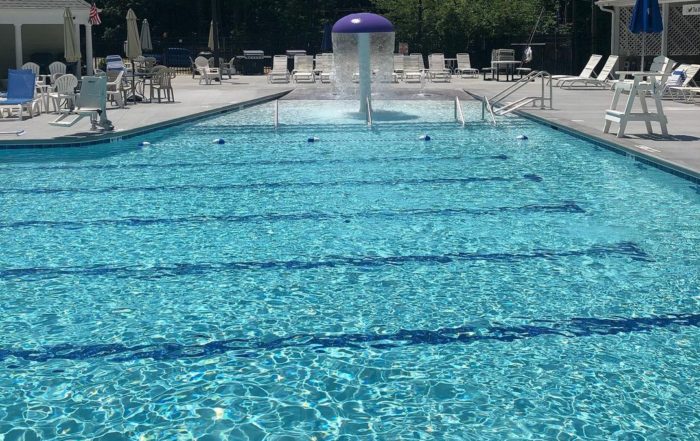10 FREQUENTLY ASKED QUESTIONS

10 FREQUENTLY ASKED QUESTIONS . . .
1. What is the difference between shotcrete and gunite?
Answer: The main difference between shotcrete and gunite is 3/8″ stone. Gunite is a dry mixture of sand and cement with water added at the nozzle during application. Shotcrete is a wet mix of sand, cement and usually 3/8″ pea gravel, delivered to the job already mixed in a concrete truck.
2. Why does pool tile crack and fall off?
Answer: Tile and coping damage are often the result of poor drainage around the pool, leading to saturation of the pool shell. The other main reason for tile and coping failure is improper installation. Some installers will use a 2-3″ mortar bed to level the top of the pool. In most cases, especially in a cold climate, a mortar bed that thick will fail.
3. Does the filter system need to be close to the pool?
Answer: No. The filtration system DOES NOT need to be right next to the pool. With the proper sizing of pipe, it can be placed out of sight, like behind a shed, or in the rear of the yard, etc.
4. How long will my plaster pool finish last?
Answer: When properly installed, and more importantly, proper water chemistry maintained, plaster can last over 10 years.
5. Why should I winterize my pool, can’t I just lower the water level?
Answer: No. Today’s pools should be winterized by blowing the lines with an air compressor, and plugging all pipes connected to the pool. The filter system should be drained as well.
6. Why should I check my alkalinity, isn’t it the same as P.H.?
A: No! In a swimming pool, alkalinity is a separate entity from P.H., and needs to be treated as such. You need to have your alkalinity in the acceptable range of (80-120 ppm) to be able to balance your other chemicals properly. When the alkalinity is extremely low, the water becomes aggressive. The water may even be clear, but it will eat away at the plaster, piping and components.
7. Does my yard need to be flat to install a pool?
Answer: No. In most cases the yard is not flat and the excavation soil is used to grade around the pool. Pools can be built into embankments or hills with the use of retaining walls – which can be incorporated into the pool design as a water feature.
8. Can we get a heater on our pool if we don’t have gas service?
Answer: Yes. There are several options for heating pools when you do not have gas service. Natural gas heaters, propane heaters, heat pumps, and solar heating are some of your options. Click on the Pentair link to explore your options.
9. How high should my water level be in the pool?
Answer: Usually, right in the middle of the tile line is where the water level should be kept. But, to insure optimum surface cleaning, make sure the water line is no more than half way up the skimmer mouth or mouths.
10. Does my concrete pool have to be installed in the ground?
Answer: No. Certain precautions and or preparations have to be made, but the pool could be up out of the ground. It’s actually a popular option these days, usually finished with a stone or stucco vaneer.

